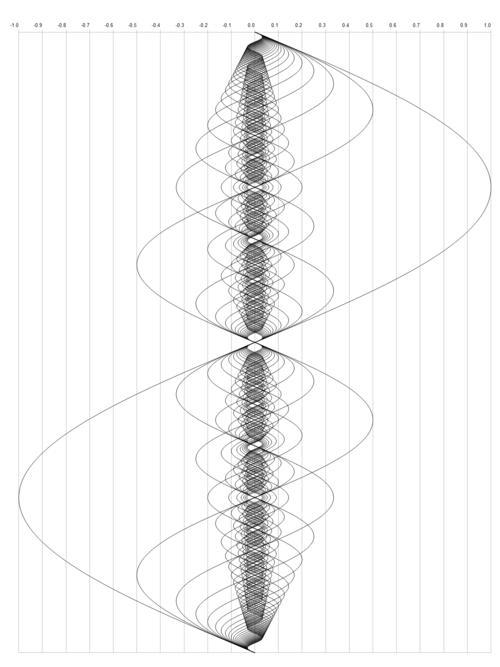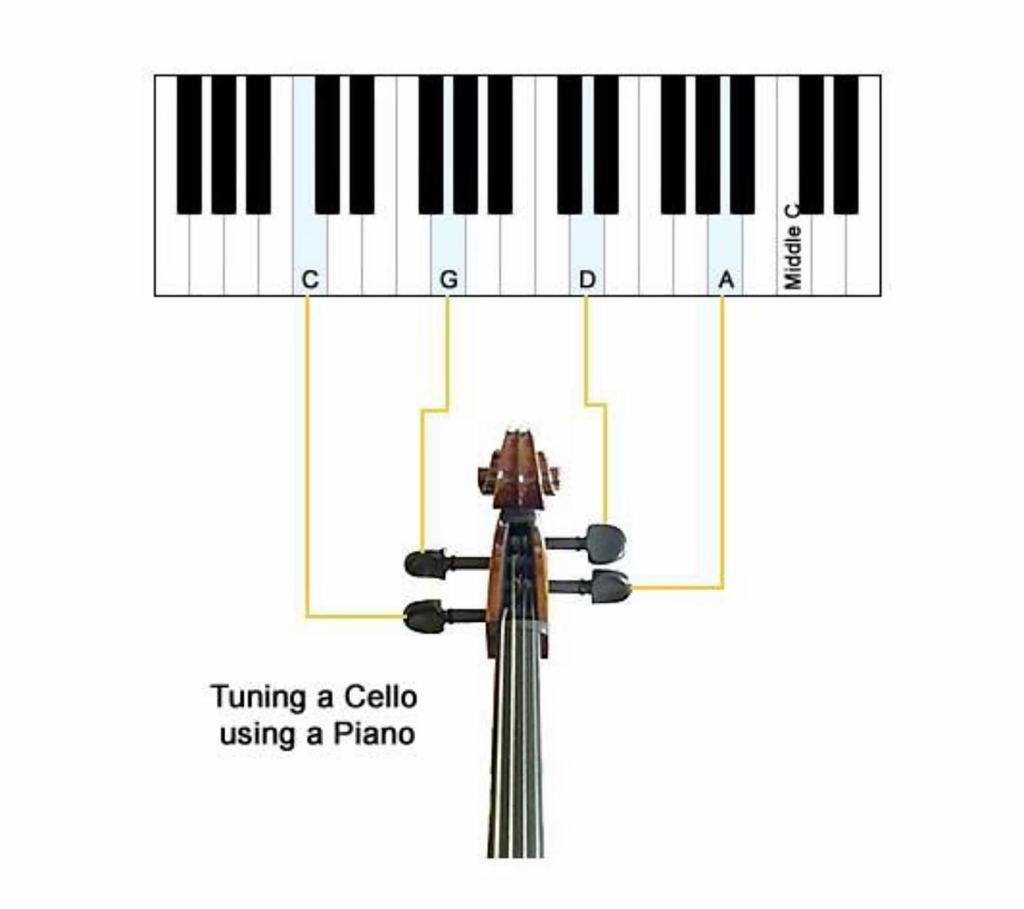"Oh, they tuned my cello at the store.
I'm good."
If only that were the truth! However, your cello should be tuned each time you sit down to play. You’ll find that if you tune it every day, it will stay more or less in tune from day to day. Using an electronic tuner is a sure-fire way to keep the instrument dialed in. Everyone asks which app to use, to be honest it doesn’t matter much. I use the “DA Tuner” app on my phone and Pitch Fork app on my Samsung smart watch. There are lots of free apps available on IOS and Android or you can use a hardware tuner. Anything that works to let you know when you are sharp, flat, or right on. The video walks you through the particulars but make sure you match the notes to the diagram below.


DO
- Check your tuning each time you practice. New instruments are especially prone to going out of tune because they are still settling. New strings stretch and may still be adjusting to humidity and temperature. If you check tuning each day, you’ll find after 5-7 days the instrument will hold its tune reliably.
- Once you think you have the cello in tune — TUNE AGAIN! Adjusting the C string can change the tuning on the A string pretty easily. You are adjusting tension so understand that as one side of the bridge receives more tension it affects the opposite side of the bridge sort of like a teeter-totter. If the cello was considerably out of tune to start you may have to tune 3 or 4 times before the adjustments are small enough not to throw off the other strings.
- Use the fine tuners whenever possible. It’s hard to do much damage with the fine tuners. I’ve never seen a string break when a student uses an electronic tuner and the fine tuners. Can’t say the same for the pegs!
- Ask for help if you are lost. If you don’t have a string player friend nearby then bring the cello to a music store or bring the cello with you to school and ask the orchestra teacher for help. It’s better to get some help from someone who knows than to break a string or worse.
- Keep an eye on your bridge. The base of the bridge should be fully touching the top of the cello. Strings are more likely to go flat more often than sharp. As we pull the strings back with tuners to get it back in tune, this can cause the bridge to lean back. If this happens to you, have a technician or teacher straighten it out and re-tune the instrument!
- Store the instrument in its case and away from vents or windows to give it some protection/insulation from humidity and temperature changes.
DON’T
- Don’t store the cello on a vent or near a window. Changes in temperature are largely responsible for tuning problems.
- NEVER leave your cello in the car – especially not in the trunk. You are now a cellist. Cellists do not leave their instruments in the car. Cellos are made of different types of wood – those woods expand and contract at different rates. If the instrument gets too warm or too cold it will come unglued, crack, or worse. Cellos are fragile and valuable – two good reasons not to leave them unattended.
- Don’t use the pegs unless you have to, at least when you are starting out. Some cellos are now coming with pegs that don’t need to be pushed in while you turn, these are easier but still more likely to break a string than a fine tuner. If you pull the string too tight IT WILL BREAK.
Pro Tip
Pro’s adjust the tune while they play the string. While seated, pull your left hand out from behind the cello and reach over the top of the string you are playing to the fine tuners. You may be more comfortable if you let the cello rest more on your left thigh.
Especially young beginners should not tune their own instruments. Adolescents and adults should learn to tune their own instruments with the help of a tuner. Eventually, cellists learn to adjust tuning without a tuner but with “A” provided. We then tune the D-string to the A, the G-string to the D, and the C-string to the G. The entire cello is then tuned to the A provided. In the United States 440 Hz is the generally-accepted standard for the provided A. That frequency is used to tune orchestras, pianos, and string instruments nationwide. In many parts of Europe 442 Hz or even higher is the accepted standard for the tuning A.
